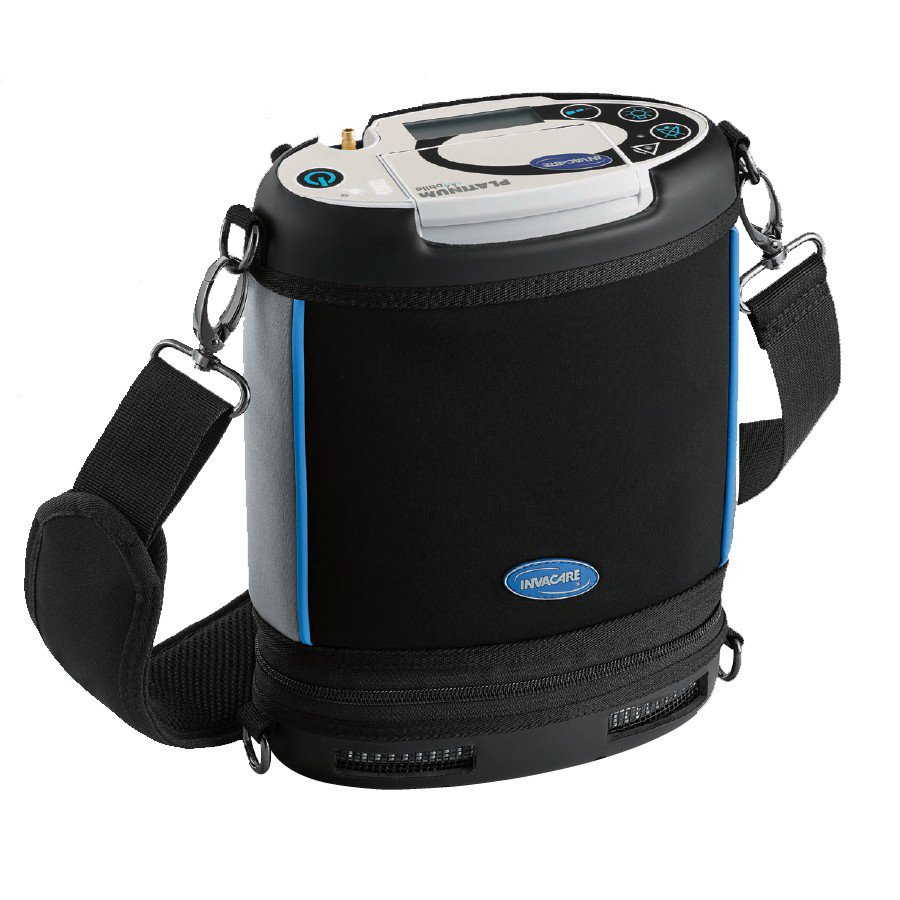The Facts About Portable Oxygen Concentrators Revealed
Table of ContentsPortable Oxygen Concentrators - The FactsExcitement About Portable Oxygen ConcentratorsGetting My Portable Oxygen Concentrators To WorkRumored Buzz on Portable Oxygen Concentrators
Fixed oxygen concentrators were once the criterion, however these storage tanks might evaluate 50 pounds and were very cumbersome (Portable Oxygen Concentrators). Now, mobile oxygen concentrators finish the job, and they can suit a handbag or purse! The only thing you should maintain in mind is that mobile concentrators have extra minimal oxygen distribution abilitiesThere are two main kinds of mobile oxygen concentrators: pulse dose and constant flow. As the name recommends, pulse dose concentrators offer oxygen intermittently, just turning on when you inhale. This sort of tool is usually suggested for COPD clients with minimal oxygen needs, as the amount of O2 that a pulse dose concentrator can supply is fairly low.
This tool can provide up to 3,000 m, L of oxygen every minute, while pulse dosage gadgets tend to top out at 1250 m, L. Continuous circulation gadgets are the go-to for many COPD clients, as they're perfect for people that need 2 to five liters of oxygen a min.
Now that you have this overview to the various kinds of mobile oxygen devices, pick the best tool with the aid of your physician.
6 Simple Techniques For Portable Oxygen Concentrators
We are aware Americans use residential versions in home treatment situations. We asked yourself how well these portable oxygen concentrators would certainly work in health centers. POC concentrators enhance the percentage of oxygen in ambient air people inhale, whenever they require an increase. Private-use ones are tiny adequate to bring around, and might aid avoid the need to visit congested centers and healthcare facilities.
When it pertains to mobile oxygen therapy, there are two major alternatives for distribution. These are mobile oxygen cyndrical tubes which consist of compressed oxygen gas, or oxygen concentrators, which use a battery powered system to compress and filter air, in order to develop a regular supply of focused oxygen. In this article, AMS Compound Cylinders Technical Supervisor, Tony Morrin, contrasts both, taking a look at the benefits and drawbacks of each oxygen delivery system for NHS clinical oxygen customers in terms of client freedom.

Portable Oxygen Concentrator Oxygen purity is constantly higher when supplied from cylinders it never goes down below 99. Whilst oxygen concentrators can be helpful for individuals that need a lower circulation of oxygen, cylinders offer higher concentrations that can be much more suitable for people with high flow requirements.
Getting The Portable Oxygen Concentrators To Work
Both systems need the patient to lug around tools. For cylinders, this will certainly consist of bring a bag (and occasionally a cart) and for mobile oxygen concentrators this will consist of the bag, trolley and power battery charger. Weight smart, mobile oxygen concentrators can be comparable in weight, or often, lighter than traditional aluminium cylinder systems.
They will certainly need to improve dramatically if they are to provide the same degree of performance as similar composite cyndrical tubes. Oxygen constantly carries a safety danger. On one hand, need to cylinders spring a leak, they can produce an oxygen abundant atmosphere that can result in a boost in fire these details danger.

The difference is that there are substantial upfront expenses to acquiring a mobile oxygen concentrator, however reduced running costs using cyndrical tubes makes it possible for the purchaser to spread out the expense over an extended duration of time. One minor disadvantage of a portable oxygen concentrator is the sound portable systems make a considerable quantity of noise throughout operation, which several clients find distracting.
What Does Portable Oxygen Concentrators Do?

Our premium carbon composite cylinders provide high stress (300 Bar), low weight, and NLL (Non-Limited Life) efficiency, and are approved for usage worldwide. More information regarding AMS Composite Cylinders Ltd can be located at .
Oxygen concentrators are made with see this here individual movement in mind. Whether it's a desktop computer version for home usage or a smaller sized, lightweight version for on-the-go, these gadgets allow people to relocate freely without being connected to a stationary unit. Specifically for the ones particularly developed for transportability, individuals can carry them about, assisting in traveling and day-to-day activities easily.
One of the significant comforts of using an oxygen concentrator is the elimination of the frequent requirement to refill oxygen containers. This not only lowers the logistical obstacles and recurrent expenses associated with refills however additionally makes sure that the user has a much more foreseeable and steady source of oxygen. Oxygen concentrators are made to fit effortlessly right into the home setting.